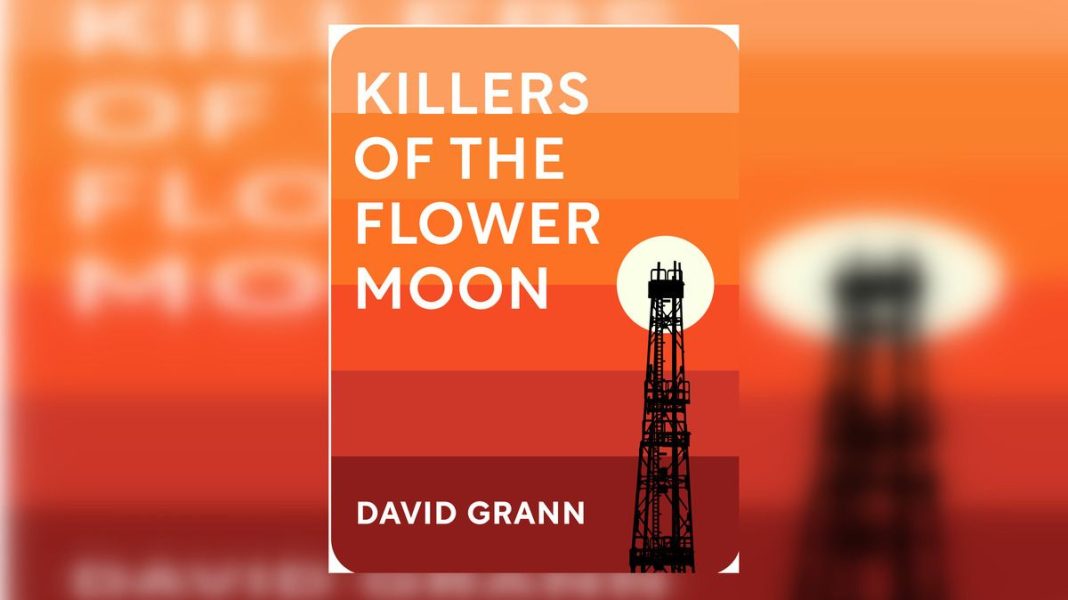David Grann’s “Killers of the Flower Moon” talks about the spiteful animosity that the Osage natives had to face in America as they were driven out from their rightful lands, systematically robbed of their riches, and then ultimately became victims of a conspiracy that only got uglier by the turn. Grann is fearless, vivacious, and bold in his documentation of the selective amnesia that American history often suffers from. “Killers of the Flower Moon,” in its unabashed truth and thorough research, surpasses being a mere history lesson, and Grann, in his adding of the personal to the historical, excels as a true crime writer with its murders, mysteries, and morbidity.
This Sunday Times bestseller can be easily segmented into three sections. “Killers of the Flower Moon” begins with Grann’s attempt to refresh our memory as we go through a detailed historical account of the Osage Indians, from how they had been driven away from their rightful land to their new settlement in Oklahoma, the discovery of the oil and their rise to fortune. The second part of the book reads like a thriller detective novel as David Grann narrates the serial killings of the Osage natives, the formation of the FBI, the ultimate conspiracy at play, and the final conviction. However, the book does not end with the unraveling of the murder mystery and the culprit being caught. “Killers of the Flower Moon” goes beyond the mere revision of history; it is a pursuit of truth. The systematized conspiracy and the malice, hatred, greed, and avarice acting as the driving forces make Grann delve deeper into the subject matter. The final segment of the book, therefore, documents Grann’s obsessive research on the Osage murders and his ambitious attempt at exposing the unexposed.
After the conviction of the murderers, the case of the Osage killings was declared closed by the FBI. However, this does not prove to be enough for David Grann. He digs further into the old documents and records and discovers the discrepancies and gaps in the FBI’s investigation. The primary reason that bothered Grann was the remaining murders which had not been connected to Hale (convict in the Osage Murders) yet. There had been around twenty-four killings of the Osage natives, and while Hale had been connected to some of them, there were still many loose ends that were left hanging. The concern, therefore, was: Did the FBI reach the ultimate closure? Or, had there been other conspirators responsible for the Osage murders?
One such victim, whose murder had not been directly connected to Hale, was W. W. Vaughan. As Grann followed up with the victim’s family, it came to light how these families had been anonymously threatened against attempting to pursue further investigation. Upon further studying the National Archives, Grann discovered new characters and pawns in the master ploy that had been at play; Burt was one such character. Burt was the head of a bank, and a friend and client of Vaughan’s, and details revealed that he owed Vaughan a sum of ten thousand dollars. This sum also involved George Bigheart, another of Vaughan’s clients. However, unsurprisingly, before Big heart could reveal any information about Burt, he had fallen prey to the “reign of terror” and been driven to death through poisoning.
In “Killers of the Flower Moon,” Grann’s literary journalism transcends beyond documentation and investigation; it also presents a humane side to the stories of the hundreds of Osage families, which have remained unheard of for too long. The trauma and injustice faced by the Natives did not end with the murders or the trial of Hale. If anything, it was only the beginning of the transgenerational trauma that was to engulf the Osage tribes, and the penniless widowed Martha with her ten children is only a reflection of the innumerable unnamed victims and their families. As David Grann continued his in-depth study, the materials only got fewer and smaller to work on. However, his interviews with the victim’s families and acquaintances and the dig into the archives brought to the surface several interesting finds, some of which bares the politics, prejudice, and power play within the justice system.
The book reflects as Grann’s responsibility to reveal the reality of the Osage murders to the world, and after five years of intensive research along with the addition of photographs, Grann finally fulfills his purpose of allowing the readers to be aware of the untold war the Osage Indians have been fighting. His style of writing, wherein he provides three different viewpoints, helps the readers arrive at their own unbiased judgment. Thus, Grann’s “Killers of the Flower Moon” is not only a chronicle of history but also a mirror that reflects reality. A reality that is much darker, deeper, and uglier. A reality that makes one furious.


